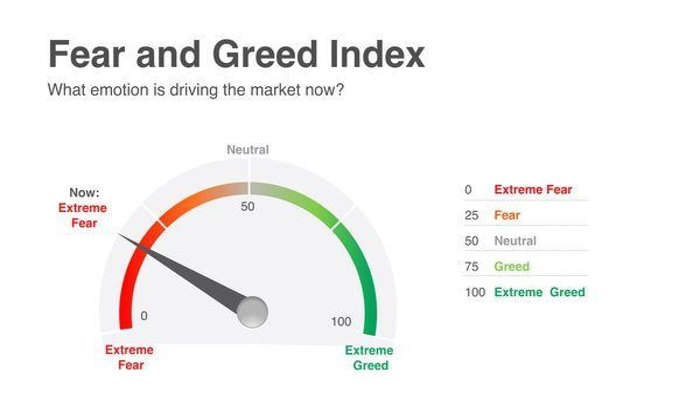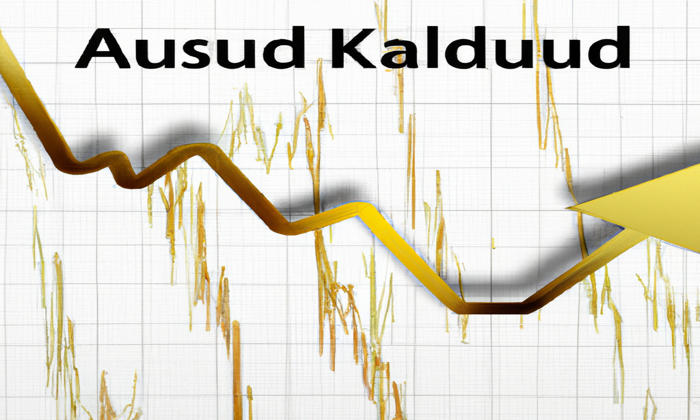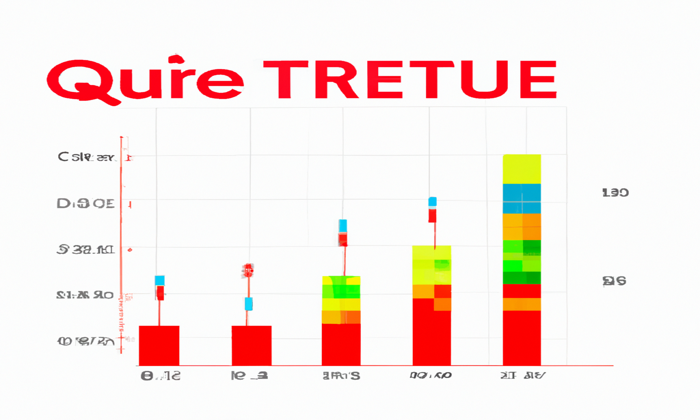The Crypto Fear & Greed Index has recently plummeted to a troubling low of 25, signifying a state of extreme fear within the cryptocurrency market. This dramatic shift aligns with the Bitcoin price drop below $93,000, causing widespread concern among investors and traders alike. As the index falls from a neutral 49 to this alarming level, it reveals the prevailing crypto market sentiment that is pushing many participants to the sidelines. With the Ethereum and Solana declines of 10% and 14% respectively, the atmosphere is charged with uncertainty, exacerbated by significant liquidations in crypto that have reached nearly $1 billion. This current climate is further influenced by macroeconomic impacts, including rising inflation concerns and regulatory pressures, adding layers of complexity to an already volatile market.
The current state of the cryptocurrency landscape can be best understood through the lens of the Fear & Greed Index, a crucial barometer for gauging market emotions. As digital assets like Bitcoin face considerable price corrections, the overall market sentiment reflects a deep apprehension among traders. The recent downturn has not only affected Bitcoin but has also led to declines in popular altcoins such as Ethereum and Solana. Furthermore, the surge in market liquidations underscores a growing reluctance to engage in trades amidst fears of further losses. All these factors highlight the intricate relationship between market psychology and the broader economic environment, as investors navigate through the complexities of crypto trading.
Understanding the Crypto Fear & Greed Index
The Crypto Fear & Greed Index is a widely recognized tool in the cryptocurrency ecosystem that gauges market sentiment, specifically among investors. This index operates on a scale from 0 to 100, where lower values indicate extreme fear and higher values signal extreme greed. Recently, the index has plummeted to 25, the lowest it has been since September 2024, reflecting a significant downturn in investor confidence as Bitcoin’s price drops below $93,000. This sharp decline corresponds with a broader market sentiment shift, highlighting how quickly perceptions can change based on market movements.
As the index shifts from a neutral stance to extreme fear, it serves as a warning signal for potential investors. The current situation, where Ethereum and Solana have also seen considerable declines of 10% and 14% respectively, underscores a collective anxiety within the crypto market. This heightened fear can lead to increased volatility, as investors may rush to liquidate their positions, further exacerbating the downturn. Understanding the implications of the Fear & Greed Index can help traders and investors navigate these turbulent waters.
Market Impacts: Bitcoin Price Drop and Its Consequences
The recent drop in Bitcoin’s price below $93,000 has triggered significant repercussions across the cryptocurrency landscape. This price decline not only reflects the immediate market sentiment but also highlights the interconnectedness of various assets within the crypto space. As Bitcoin leads the market, its downturn often results in cascading effects on altcoins like Ethereum and Solana, which have also experienced notable declines. When major cryptocurrencies face such sell-offs, it creates a ripple effect that influences investor behavior and market dynamics.
Moreover, the current market sell-off has resulted in massive liquidations, totaling nearly $957.85 million in just 24 hours. The majority of these liquidations stem from long positions, indicating that many investors had taken bullish stances prior to the downturn. This situation exemplifies the inherent risks associated with leveraged trading in the crypto market, where rapid price movements can lead to substantial losses. As the market grapples with this volatility, understanding the underlying causes of the Bitcoin price drop is crucial for investors looking to make informed decisions.
The Role of Macroeconomic Factors in Crypto Market Trends
Macroeconomic influences play a pivotal role in shaping the sentiments and trends within the cryptocurrency market. Recent announcements from U.S. President Donald Trump regarding tariffs on Canada and Mexico have introduced additional uncertainty, causing investors to reassess their positions. Such geopolitical factors can greatly impact trading volumes and market stability, leading to increased volatility in cryptocurrencies like Bitcoin, Ethereum, and Solana. As the crypto market reacts to these macroeconomic shifts, it becomes evident that external pressures can significantly affect investor confidence and market dynamics.
Additionally, ongoing concerns regarding the Federal Reserve’s monetary policy, particularly the potential delay in rate cuts due to unexpectedly high inflation, have contributed to a cautious atmosphere in the crypto space. Elevated borrowing costs can stifle investment in riskier assets, including cryptocurrencies, leading to a decline in overall market sentiment. As investors weigh these macroeconomic factors against the backdrop of their trading strategies, it becomes imperative to consider how global economic conditions can impact the performance of cryptocurrencies.
Liquidations in Crypto: Understanding the Current Scenario
The recent surge in liquidations within the cryptocurrency market has raised concerns among investors and analysts alike. With nearly $957.85 million wiped out in liquidations, the majority arising from long positions, it is clear that many traders were caught off-guard by the rapid price declines. This phenomenon often occurs when market sentiments shift unexpectedly, leading traders who leveraged their positions to face significant financial losses. The current scenario serves as a stark reminder of the risks associated with margin trading in an inherently volatile market.
Furthermore, the spike in liquidations indicates a previously overly optimistic stance among traders, which has now been quickly reversed by the recent market downturn. As risk tolerance decreases, open interest in futures contracts has also dropped by 5%, reflecting a more cautious approach among investors. Understanding the dynamics of liquidations in crypto trading is essential for both new and experienced traders, as it highlights the importance of risk management and the potential consequences of market volatility.
Ethereum and Solana: Current Market Challenges
The declines in Ethereum and Solana prices have drawn attention as significant players within the crypto market face challenges. Both cryptocurrencies have seen drops of 10% and 14% respectively, reinforcing the notion that the entire market is interconnected and vulnerable to price movements of major assets like Bitcoin. The decline in these altcoins not only affects their individual investors but also impacts overall market sentiment, further contributing to the fear reflected in the Crypto Fear & Greed Index. As traders react to these developments, the potential for further declines remains a pressing concern.
Moreover, the performance of Ethereum and Solana can be indicative of broader trends within the crypto ecosystem. Their recent struggles may suggest a lack of confidence in the market’s ability to recover quickly from downturns, particularly in light of external pressures such as macroeconomic factors and security concerns. As investors analyze these trends, it is crucial to consider both the technical and fundamental aspects that may influence the future performance of these prominent cryptocurrencies.
Market Sentiment: The Ripple Effect of Fear
The current market sentiment within the cryptocurrency landscape is heavily influenced by the prevailing fear reflected in the Crypto Fear & Greed Index. With the index dropping to its lowest point since September 2024, it signals a widespread sense of anxiety among investors. This fear can lead to a domino effect, where negative sentiment encourages more selling, resulting in further price declines across the board. Understanding this psychological aspect of trading is essential for investors looking to navigate the tumultuous waters of the cryptocurrency market.
Additionally, as fear grips the market, it can skew the perception of value and lead to irrational trading decisions. Many investors may panic and sell their holdings at a loss, exacerbating the downward trend in prices. This behavior underscores the importance of maintaining a disciplined trading strategy, even during times of heightened fear. By recognizing the impact of sentiment on market dynamics, investors can better position themselves to capitalize on potential recoveries once the fear subsides.
The Importance of Market Recovery Strategies
As the cryptocurrency market faces its current challenges, developing effective recovery strategies becomes paramount for investors. Understanding the market’s cyclical nature can help traders identify potential entry points during periods of extreme fear. By analyzing historical data, investors can formulate strategies that take advantage of price corrections and capitalize on future growth once market sentiment improves. Such strategies may include dollar-cost averaging or diversifying portfolios to mitigate risks associated with volatility.
Moreover, maintaining an awareness of macroeconomic factors and their potential impact on the cryptocurrency market is vital for informed decision-making. As external pressures evolve, adapting trading strategies to align with changing market conditions can enhance resilience against downturns. In this context, the ability to remain patient and composed during market fluctuations can lead to more favorable outcomes in the long run.
Security Issues and Their Impact on Crypto Sentiment
Recent security breaches, such as the $1.4 billion Bybit hack, have significantly impacted market sentiment, further contributing to the current climate of fear. These incidents raise concerns among investors regarding the safety and security of their assets, leading to increased caution in trading activities. As trust in exchanges wavers, many traders may choose to withdraw their funds or avoid trading altogether, resulting in decreased market liquidity and heightened volatility.
Furthermore, the aftermath of such security breaches often leads to regulatory scrutiny, which can introduce additional uncertainty into the market. As exchanges implement stricter security measures and protocols, traders may face delays and complications in accessing their funds, further exacerbating market fears. Understanding the implications of security issues on market sentiment is crucial for investors, as it highlights the importance of choosing reputable platforms and remaining vigilant in safeguarding their assets.
The Future of Cryptocurrency Amidst Market Uncertainty
Despite the current market challenges, there lies potential for recovery and growth within the cryptocurrency space. As the market matures, investors are becoming more adept at navigating volatility and formulating strategies that align with changing conditions. While the recent declines in Bitcoin, Ethereum, and Solana may evoke fears, history has shown that markets can rebound from downturns. By maintaining a long-term perspective, investors can position themselves to benefit from future opportunities that arise once the market stabilizes.
Moreover, the increasing institutional interest and acceptance of cryptocurrencies are positive indicators for the future of the market. As more individuals and organizations adopt digital assets, the overall resilience and legitimacy of the cryptocurrency space may strengthen. This growing interest can lead to improved market sentiment and a renewed sense of optimism among investors. By focusing on the long-term potential of cryptocurrencies, traders can remain hopeful for a brighter future, even amidst current uncertainties.
Frequently Asked Questions
What does the Crypto Fear & Greed Index indicate about Bitcoin price drop trends?
The Crypto Fear & Greed Index serves as a barometer for market sentiment, providing insights into potential Bitcoin price drop trends. When the index falls to extreme fear levels, like its current position at 25, it often signals that investors are anxious, which can lead to increased volatility in Bitcoin prices.
How does the Crypto Fear & Greed Index relate to crypto market sentiment during Ethereum and Solana decline?
The Crypto Fear & Greed Index is integral in understanding crypto market sentiment, especially during declines in cryptocurrencies like Ethereum and Solana. A significant drop in the index, as seen recently, often correlates with declining prices in these assets, indicating widespread investor fear.
What impact do liquidations in crypto have on the Crypto Fear & Greed Index?
Liquidations in crypto can heavily influence the Crypto Fear & Greed Index. High levels of liquidations, such as the recent $957.85 million, suggest a shakeout of overly optimistic positions, which exacerbates fear in the market and contributes to a lower index score.
How does macroeconomic impact on crypto affect the Crypto Fear & Greed Index?
Macroeconomic factors, such as tariffs and inflation concerns, can significantly affect the Crypto Fear & Greed Index. Recent market reactions to U.S. economic policies have created uncertainty, pushing the index into extreme fear territory and reflecting heightened investor anxiety.
What does a low Crypto Fear & Greed Index score mean for future market movements?
A low Crypto Fear & Greed Index score suggests extreme fear in the market, which can indicate potential buying opportunities for savvy investors. Historically, such conditions may precede market recoveries, although they also signal heightened risk.
| Key Point | Details |
|---|---|
| Current Index Value | 25 (Extreme Fear) |
| Previous Index Value | 49 (Neutral) |
| Bitcoin Price | Below $93,000 |
| Market Reaction | Ethereum dropped 10%, Solana dropped 14% |
| Liquidation Amount | $957.85 million |
| Long Positions Liquidated | $886.47 million |
| Open Interest Change | Decreased by 5% to $108 billion |
| Macroeconomic Factors | 25% tariffs proposed by Trump, inflation concerns |
| Bybit Hack | $1.4 billion hack affecting market sentiment |
| Market Maturity | More measured reaction compared to FTX collapse |
Summary
The Crypto Fear & Greed Index has recently hit a low of 25, indicating a state of extreme fear in the market. This metric captures the prevailing sentiment among investors, reflecting a significant downturn influenced by various factors, including a substantial drop in Bitcoin’s price and macroeconomic uncertainties. With the current market dynamics showing heightened volatility and a marked increase in liquidations, it underscores the challenges that the cryptocurrency sector faces. However, despite these adverse conditions, the market’s response appears to be more tempered than in previous crises, suggesting a potential evolution in investor behavior and market resilience.
The Crypto Fear & Greed Index has plunged to its lowest level since September 2024, registering a stark score of 25 and signaling extreme fear among investors as Bitcoin price drops below $93,000. This index, developed by Alternative, quantifies crypto market sentiment on a scale from 0 to 100, where lower values indicate heightened fear and uncertainty. In just one day, the index has seen a dramatic fall from 49, reflecting the turbulence in the market following significant declines in major cryptocurrencies like Ethereum and Solana, which dropped 10% and 14% respectively. Such shifts in sentiment often lead to liquidations in crypto, with recent data revealing nearly $958 million wiped out from leveraged positions. The macroeconomic impact on crypto, particularly from external pressures like inflation and geopolitical events, continues to shape the landscape as traders react to these volatile conditions.
The sentiment analysis tool known as the Crypto Fear & Greed Index has recently indicated a period of intense market anxiety, especially following the notable decline in Bitcoin’s value. This index serves as a crucial gauge for understanding investor emotions, oscillating between fear and greed as it reflects the broader health of the cryptocurrency market. With Ethereum and Solana experiencing substantial drops, the repercussions ripple throughout the industry, leading to significant liquidations and shifts in trading patterns. Additionally, the current economic climate, influenced by inflation concerns and regulatory changes, plays a pivotal role in determining market reactions. As the cryptocurrency landscape evolves, tracking these sentiment indicators becomes essential for navigating the complexities of crypto investments.














